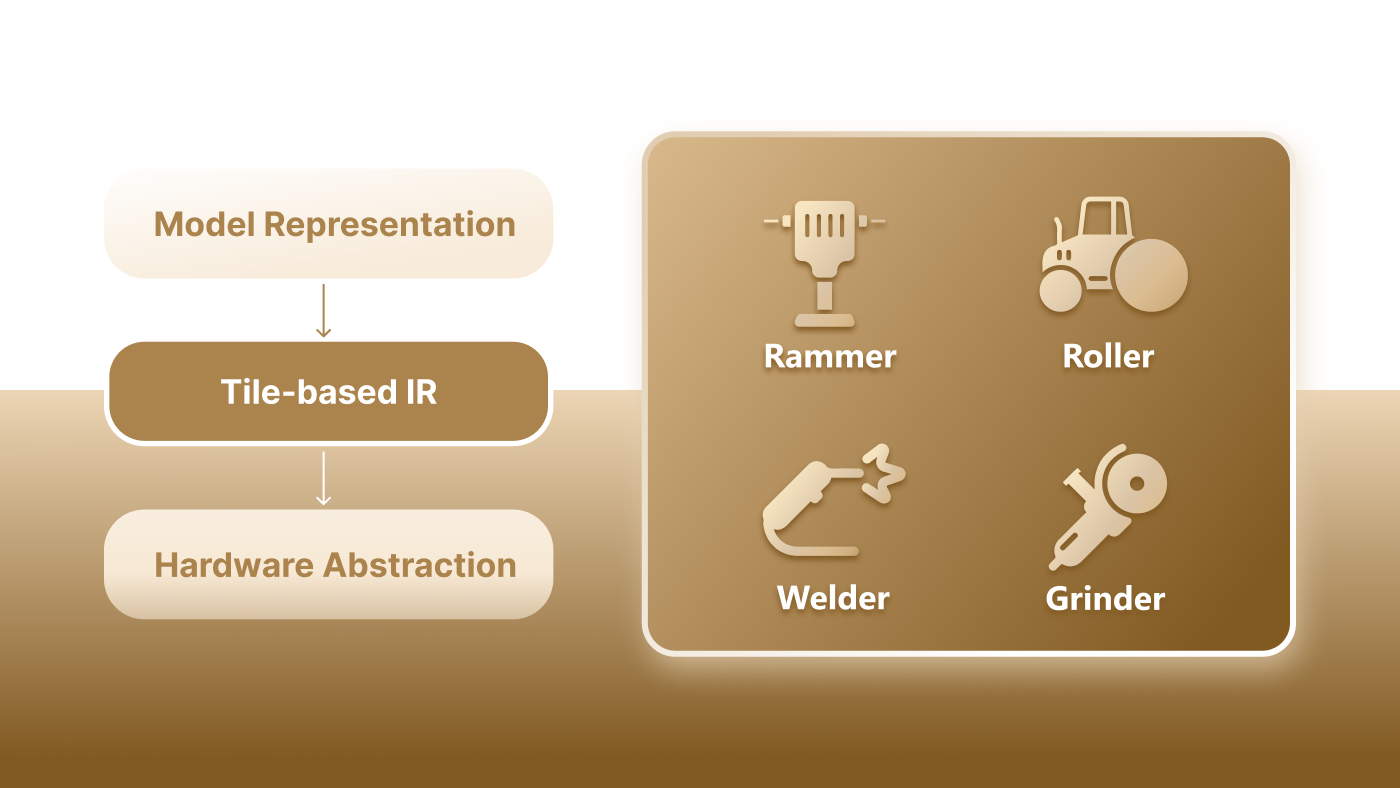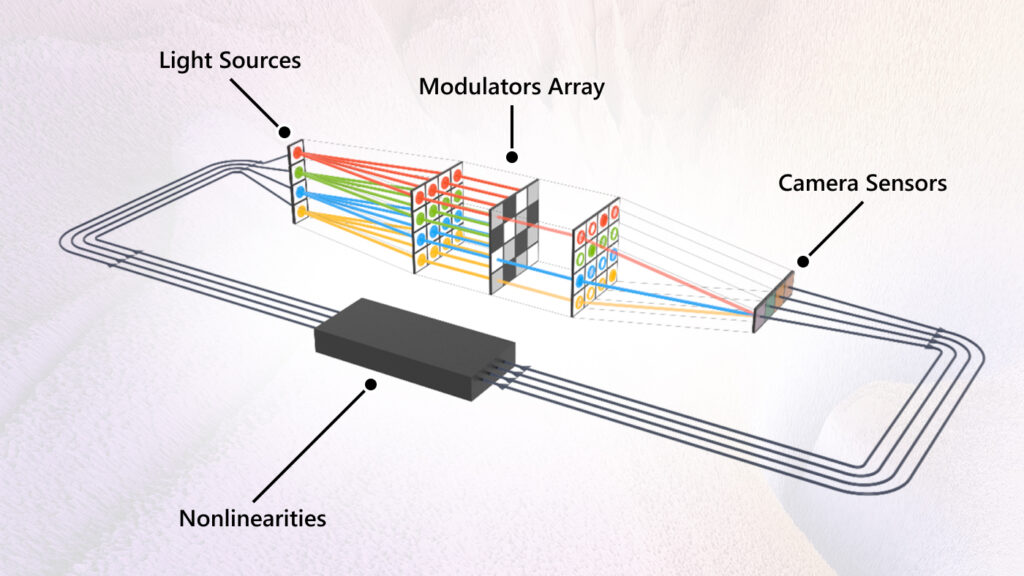
Picture a world where computing is not limited by the binary confines of zeros and ones, but instead, is free to explore the vast possibilities of continuous value data. Over the past three years a team of Microsoft researchers has been developing a new kind of analog optical computer that uses photons and electrons to process continuous value data, unlike today’s digital computers that use transistors to crunch through binary data. This innovative new machine has the potential to surpass state-of-the-art digital technology and transform computing in years to come.
The Analog Iterative Machine (opens in new tab) (AIM) is designed to solve difficult optimization problems, which form the foundation of many industries, such as finance, logistics, transportation, energy, healthcare, and manufacturing. However, traditional digital computers struggle to crack these problems in a timely, energy-efficient and cost-effective manner. This is because the number of possible combinations explodes exponentially as the problem size grows, making it a massive challenge for even the most powerful digital computers. The Traveling Salesman Problem (opens in new tab) is a classic example. Imagine trying to find the most efficient route for visiting a set of cities just once before returning to the starting point. With only five cities, there are 12 possible routes – but for a 61-city problem, the number of potential routes surpasses the number of atoms in the universe.
AIM addresses two simultaneous trends. First, it sidesteps the diminishing growth of computing capacity per dollar in digital chips – or the unraveling of Moore’s Law. Second, it overcomes the limitations of specialized machines designed for solving optimization problems. Despite over two decades of research and substantial industry investment, such unconventional hardware-based machines have a limited range of practical applications, because they can only address optimization problems with binary values. This painful realization within the optimization community has driven the team to develop AIM, with a design that combines mathematical insights with cutting-edge algorithmic and hardware advancements. The result? An analog optical computer that can solve a much wider range of real-world optimization problems while operating at the speed of light, offering potential speed and efficiency gains of about a hundred times.
Spotlight: AI-POWERED EXPERIENCE
Today, AIM is still a research project, but the cross-disciplinary team has recently assembled the world’s first opto-electronic hardware for mixed – continuous and binary – optimization problems. Though presently operating on a limited scale, the initial results are promising, and the team has started scaling up its efforts. This includes a research collaboration with the UK-based multinational bank Barclays to solve an optimization problem critical to the financial markets on the AIM computer. Separate engagements are aimed at gaining more experience in solving industry-specific optimization problems. In June 2023, the team launched an online service that provides an AIM simulator to allow partners to explore the opportunities created by this new kind of computer.
The technology
Photons possess a remarkable property of not interacting with one another, which has underpinned the internet era by enabling large amounts of data to be transmitted over light across vast distances. However, photons do interact with the matter through which they propagate, allowing for linear operations such as addition and multiplication, which form the basis for optimization applications. For instance, when light falls on the camera sensor on our smartphones, it adds up the incoming photons and generates the equivalent amount of current. Additionally, data transmission over fiber which brings internet connectivity to homes and businesses relies on encoding zeroes and ones onto light by programmatically controlling its intensity. This scaling of light through light-matter interaction multiplies the light intensity by a specific value – multiplication in the optical domain. Beyond optical technologies for linear operations, various other electronic components prevalent in everyday technologies can perform non-linear operations that are also critical for efficient optimization algorithms.
Analog optical computing thus involves constructing a physical system using a combination of analog technologies – both optical and electronic – governed by equations that capture the required computation. This can be very efficient for specific application classes where linear and non-linear operations are dominant. In optimization problems, finding the optimal solution is akin to discovering a needle in an inconceivably vast haystack. The team has developed a new algorithm that is highly efficient at such needle-finding tasks. Crucially, the algorithm’s core operation involves performing hundreds of thousands or even millions of vector-matrix multiplications – the vectors represent the problem variables whose values need to be determined while the matrix encodes the problem itself. These multiplications are executed swiftly and with low energy consumption using commodity optical and electronic technologies, as shown in Figure 1.
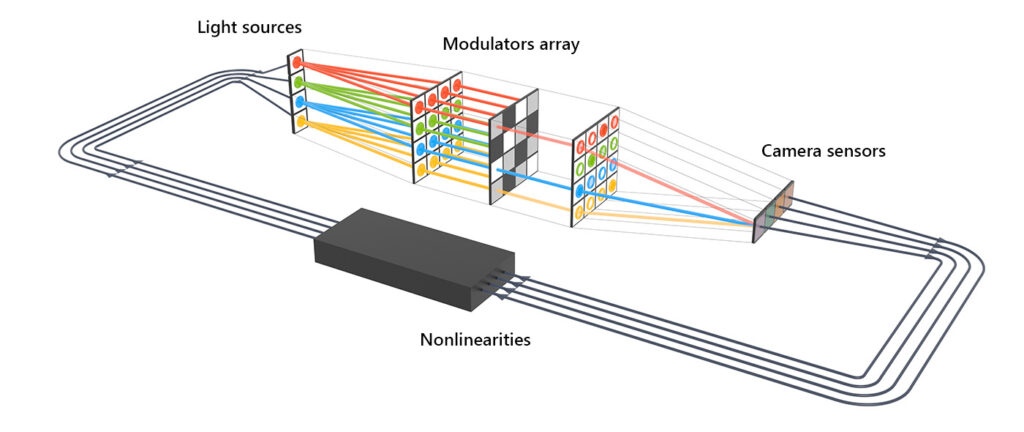
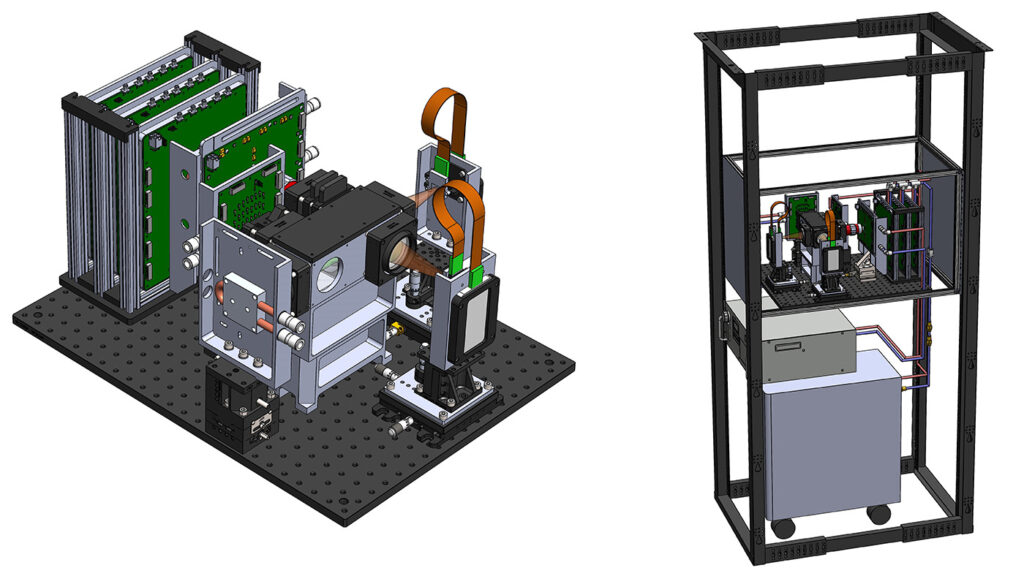
Thanks to the miniaturization of all these components onto tiny centimeter-scale chips, the entire AIM computer fits into a small rack enclosure – as shown in Figure 2. As light travels incredibly fast – 5 nanoseconds per meter – each iteration within the AIM computer is significantly faster and consumes less electricity than running the same algorithm on a digital computer. Importantly, since the entire problem is embedded into the modulator matrix inside the computer itself, AIM does not require the problem to be transferred back and forth between storage and compute locations. And unlike synchronous digital computers, AIM’s operation is entirely asynchronous. These architectural choices circumvent key historical bottlenecks for digital computers.
Finally, all technologies used in AIM are already prevalent in consumer products with existing manufacturing ecosystems, which paves the way for a viable computing platform, at full scale, if all the technical challenges can be tamed by the team.
The importance of optimization problems
Optimization problems are mathematical challenges that require finding the best possible solution from a set of feasible alternatives. The modern world relies heavily on efficient solutions to these problems – from managing electricity in our power grids and streamlining goods delivery across sea, air, and land, to optimizing internet traffic routing.
Effectively and efficiently solving optimization problems can significantly improve processes and outcomes across many other industries. Take finance, for example, where portfolio optimization involves selecting the ideal combination of assets to maximize returns while minimizing risks. In healthcare, optimizing patient scheduling can enhance resource allocation and minimize waiting times in hospitals.
For many larger problems, even the world’s biggest supercomputer would take years or even centuries to find the optimal solution to such problems. A common workaround is heuristic algorithms – problem-solving techniques that provide approximate solutions by employing shortcuts or “rules of thumb.” Although these algorithms might not guarantee the discovery of an optimal solution, they are the most practical and efficient methods for finding near-optimal solutions in reasonable timeframes. Now, imagine the immense impact of a computer that could deliver more optimal solutions in a significantly shorter timeframe for these critical problems. In some instances, solving these problems in real-time could create a domino effect of positive outcomes, revolutionizing entire workflows and industries.
QUMO: a world beyond QUBO
For years, researchers, both in industry and academia, have built impressive specialized machines to efficiently solve optimization problems using heuristic algorithms. This includes an array of custom hardware, such as field programmable gate arrays (FPGAs), quantum annealers, and electrical and optical parametric oscillator systems. However, all of them rely on mapping difficult optimization problems to the same binary representation, often referred to as Ising, Max-Cut or QUBO (quadratic unconstrained binary optimization). Unfortunately, none of these efforts have provided a practical alternative to conventional computers. This is because it is very hard to map real-world optimization problems at scale to the binary abstraction, a common theme in the team’s engagement with practitioners across industry and academia.
With AIM, the team has introduced a more expressive mathematical abstraction called QUMO (quadratic unconstrained mixed optimization), which can represent mixed – binary and continuous – variables and is compatible with hardware implementation, making it the “sweetspot” for many practical, heavily-constrained optimization problems. Discussions with industry experts indicate that scaling AIM to 10,000 variables would mean that most of the practical problems discussed earlier are within reach. A problem with 10,000 variables that can be directly mapped to the QUMO abstraction would require an AIM computer with 10,000 physical variables. In contrast, existing specialized machines would need to scale to beyond a million physical variables, well beyond the capabilities of the underlying hardware.
AIM also implements a novel and efficient algorithm for solving such QUMO problems that relies on an advanced form of gradient descent, a technique that is also popular in machine learning. The algorithm shows highly competitive performance and accuracy across various industrially inspired problem benchmarks. It even discovered new best-ever solutions to four problems. The first-generation AIM computer, built last year, solves QUMO optimization problems that are represented with an accuracy of up to 7 bits. The team, shown in Figure 3, has also shown good quantitative agreement between the simulated and the hardware version of the AIM computer to gain further confidence in the viability of these efficiency gains as the computer is scaled up. This paper gives more details about the AIM architecture, its implementation, evaluation and scaling roadmap.
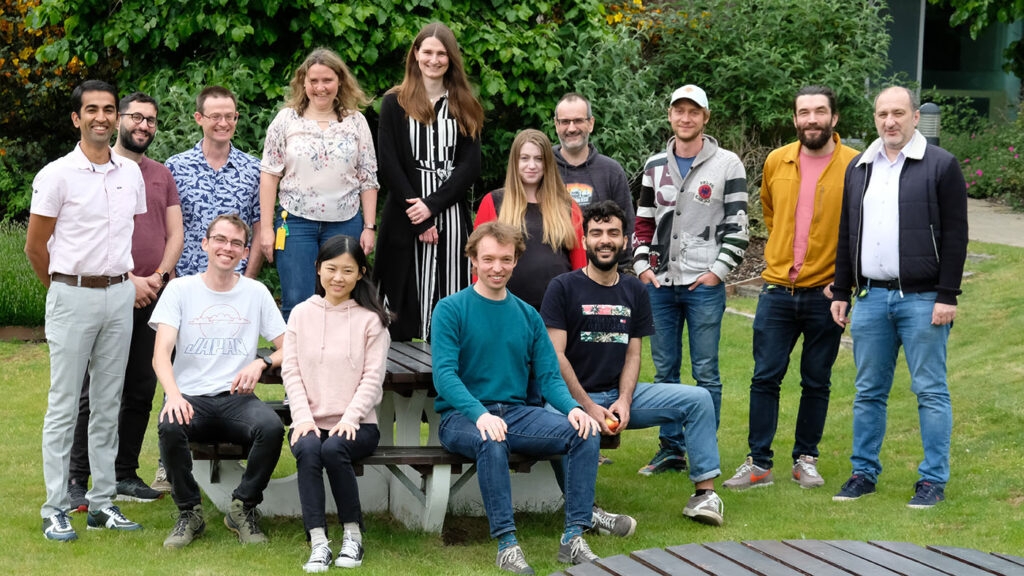
Rethinking optimization with QUMO: A more expressive way of reasoning for experts
AIM’s blueprint for co-designing unconventional hardware with an expressive abstraction and a new algorithm has the potential to spark a new era in optimization techniques, hardware platforms, and automated problem mapping procedures, utilizing the more expressive QUMO abstraction. This exciting journey has already begun, with promising results from mapping problems from diverse domains like finance and healthcare to AIM’s QUMO abstraction. Recent research has already shown that increased expressiveness with continuous variables can substantially expand the real-world business problems that can be tackled. However, to the team’s knowledge, AIM is the first and only hardware to natively support this abstraction.
As we venture into a new abstraction, we must also adopt new ways of thinking. It is crucial for the team to build a strong community to deeply investigate the benefits of embracing QUMO. We invite people who have previously been deterred by the limitations of binary solvers to consider the new opportunities offered by AIM’s QUMO abstraction. To facilitate this, we are releasing our AIM simulator as a service (opens in new tab), allowing selected users to get first-hand experience. The initial users are the team’s collaborators at Princeton University (opens in new tab) and at Cambridge University (opens in new tab). They have helped us identify several exciting problems where the AIM computer and its abstraction is a much more natural fit. We are also actively engaging with thought leaders from internal Microsoft divisions and external companies in sectors where optimization is crucial.
Together, we can drive innovation and unlock the true potential of analog optical computing for solving some of the most complex optimization problems across industries.





